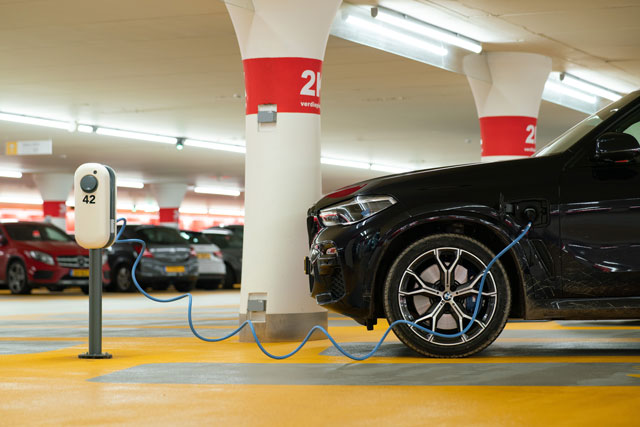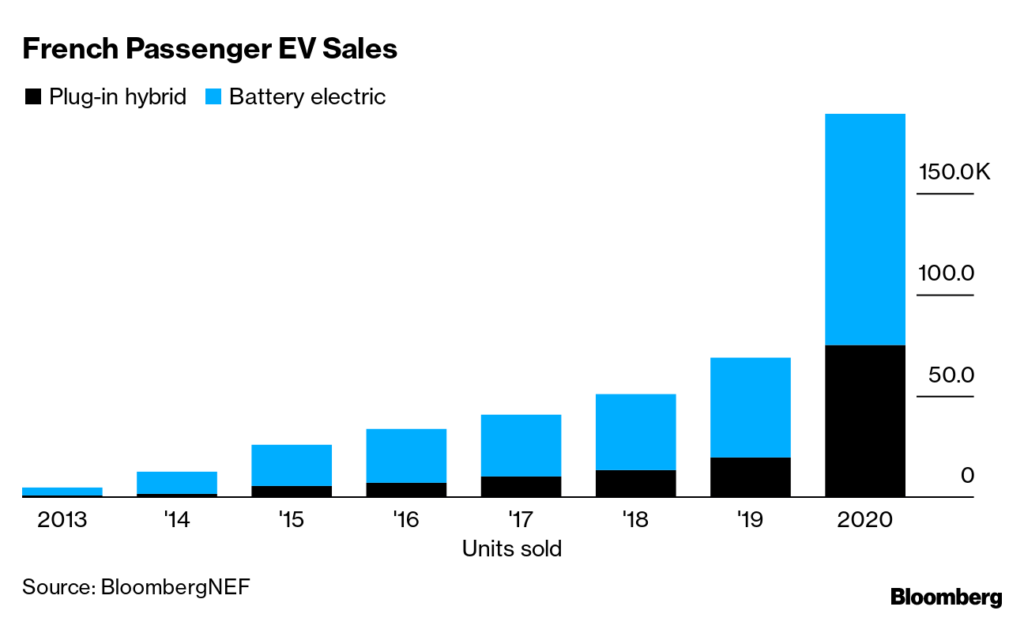
A central piece of the conversation about how to reduce greenhouse gas emissions from the transport sector has been around the need to electrify vehicles. This sentiment has been fueled by manufacturers and governments pledging to stop selling fossil-fueled powered vehicles, many starting in 2030 onwards. But while electric vehicle (EV) sales have been steadily growing, it is unlikely that adoption will happen fast enough to hit the 1.5°C target to avoid the most dangerous effects of climate change. In fact, governments face a conundrum: EVs are needed to reach climate targets, yet subsidies to date have been inequitable and inefficient, as well as expensive. Furthermore, subsidizing automobility further entrenches existing climate, health and equity issues. In much of the world, cars are out of the financial reach of many; and car subsidies only increase existing economic and access disparities.
We cannot put all our eggs into the EV basket. Governments also need to invest and work towards reducing overall demand for road transport and in particular reducing the number of single occupancy vehicle trips, especially in cities.
We should think carefully about if the main policy tool wielded by governments today, subsidizing EV purchases, is the right approach. This consideration is especially important as governments continue deploying COVID-19 recovery plans and climate-related funding packages, where limited public funds need to be spent in the most climate-efficient and equity-first way.
Luckily, there are ways in which we can more effectively incentivize the adoption of EVs, minimize the burden on taxpayers, and help reduce some of the negative externalities of ever-larger cars and SUVs.
Subsidies Today
Most current government incentives for EVs rely on either tax credits or point-of-purchase rebates. The idea behind these measures is that they can spur innovation, incentivize auto manufacturers to come up with new models, and persuade consumers to switch to electric over internal combustion engines. But at some point, such a tax credit becomes unnecessary once a new technology gets off the ground.
Tax credits for new car purchases are also expensive and tend to privilege higher-income households, which disproportionately own automobiles and tend to buy new vehicles instead of used vehicles. The cost of reducing a ton of CO2 through EV purchase subsidies is $350-$640, making this policy among the most expensive to reduce emissions. And in the U.S., for example, 83% of funds for the existing credit have been claimed by people with an adjusted gross income of over $100,000. When we contextualize this with the knowledge that those in the lowest quintile for income spend around 32% of their income on transportation, the inequality is even starker.
Leveraging Lessons from Existing Feebate Models
There are other ways to encourage EV adoption. “Feebates” are a self-financing, market-based policy where fees on more polluting vehicles help pay for rebates for more efficient models. Given this structure, feebates can be designed to be revenue neutral. Feebates can also help spur manufacturing and consumer adoption of zero-emission vehicles while upholding consumer choice. Only a few countries have implemented a simultaneous fee and rebate program, but there are lessons to be learned from policies in France and Sweden so far.
France
France has been a leader in zero-emission vehicle adoption policies for more than a decade. It launched its “bonus-malus” scheme in January 2008, and in 2019 became the first county in Europe to sign a combustion engine vehicle phase-out target into law. The bonus-malus feebate program has two components: more efficient vehicles can receive a “bonus” incentive while less efficient vehicles are penalized with a “malus” fee.
Implementation of the program saw immediate effects. For the 12-year period before the scheme began, the emissions rate for France’s new vehicle fleet was falling at an average rate of 2.25 gCO2/km per year. According to Rocky Mountain Institute, just two years into implementation of the policy, France’s new light-duty fleet had the lowest emissions rate in the European Union and was falling at a rate of 8 gCO2/km per year. The market share of “bonus” vehicles rose from 30% to 50% while the share of “malus” vehicles fell from 24% to 8%. At the close of 2019, France increased the maximum payable malus from €10,500 to €20,000 (~US$12,155 to ~US$23,155). The following year, the share of EVs as new passenger car registrations increased fourfold and the total number of EV sales rose dramatically. As for the bonus, individuals and businesses can receive up to €6,000 and €4,000, respectively, which declines over time.

Sweden
In Sweden, after setting a goal to reduce transportation sector emissions by 70% by 2030, the government adopted a three-year bonus-malus pilot in 2018, which became official policy in 2021. In implementing the new program, Sweden replaced its previous five-year tax breaks for “environmental cars” and incentive for “super-environmental cars.” The bonus-malus policy exclusively covers new private cars, light buses and light trucks.
Zero-emission vehicles receive the maximum bonus of 70,000 SEK (~US$8,160). Vehicles emitting less than 60 gCO2/kg (the same original starting point as France, though this target has since been adjusted to 20 gCO2/kg for maximum bonus) will receive a bonus that decreases linearly for each additional gram of CO2.
The malus, on the other hand, is made up of four potential components: a basic flat fee, a carbon dioxide charge (two tiers, per gCO2/km), an additional environmental charge to accommodate for the greater carbon impact of diesel compared to gasoline, and a fuel charge. All vehicles powered by gas, including hybrids, are subject to the basic and carbon dioxide charges while diesel vehicles are subject to all four.
Implementation Considerations
France’s program went through some substantial changes since its inception, particularly with its fee design. From the original non-linear function with nine “steps,” France annually adjusted and shrunk the steps until eliminating the step function all together in 2017 in favor of a continuous function so that every additional gram of CO2 is taxed. (From this lesson, Sweden implemented a continuous function from the start.) For the bonus, France introduced two additional incentives – a conversion and used vehicle bonus – in addition to the fundamental bonus, and capped the personal EV bonus at €60,000 MSRP. Although France initially struggled with finding a balance between the malus and the bonus, these changes helped achieve a more sustainable financial relationship over time.
For feebates policies broadly, other challenges can include revenue that fluctuates based on sales and consumer and automaker backlash. Beyond the policy design itself, European consumers tend to see high gasoline prices – France’s gas prices reaching $9/gallon a few months into the initial implementation of bonus-malus – which also influences consumer choice. Given the volatility of fuel prices around the world, phasing out fuel subsidies would be an effective first step for many countries.
Achieving a More Equitable, Cleaner Mobility Future
As countries around the world continue to step up their ambitions to reduce the likelihood of catastrophic climate change, they should think carefully about the best way to spend their limited resources. There are clear, high opportunity costs of using public funds to subsidize electric vehicles. EVs are part of the solution, but in some circumstances, public money could be more intelligently spent using different incentive structures and supporting public transport and better walking and cycling infrastructure, which could not only have positive climate benefits at lower costs but also move us toward a more equitable, safe and healthy world.
Alissa Huntington is a Research Analyst for the Electric School Bus Initiative at WRI.
Sebastian Castellanos is the Research Lead for NUMO, the New Urban Mobility alliance, and a Senior Research Associate at WRI Ross Center for Sustainable Cities.





